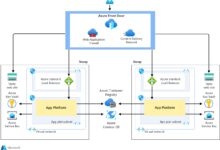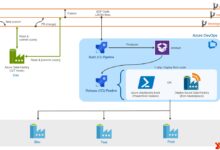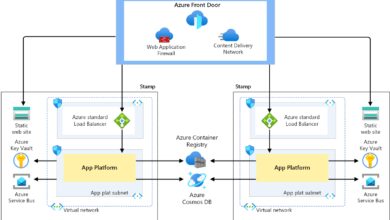Azure Login Portal: 7 Ultimate Tips for Secure & Fast Access
Accessing the Azure login portal doesn’t have to be complicated. Whether you’re a cloud beginner or an IT pro, this guide breaks down everything you need to know for a seamless, secure, and efficient login experience—backed by expert insights and real-world best practices.
What Is the Azure Login Portal and Why It Matters
The Azure login portal is the primary gateway to Microsoft Azure, a comprehensive cloud computing platform used by millions of businesses worldwide. It allows users to manage virtual machines, storage, networking, databases, and a wide range of cloud services through a unified web-based interface. Understanding how to access and navigate this portal is the first step toward unlocking the full power of Azure.
Understanding the Role of the Azure Portal
The Azure portal isn’t just a login page—it’s a full-featured management console. Once you log in, you gain access to dashboards, resource groups, monitoring tools, billing information, and security settings. It serves as the central hub for cloud administrators, developers, and decision-makers to deploy, configure, and monitor their cloud infrastructure.
- The portal supports role-based access control (RBAC), enabling granular permissions.
- It integrates with Azure Active Directory (Azure AD) for identity management.
- Users can automate tasks using built-in tools like Azure CLI, PowerShell, and ARM templates.
How the Azure Login Portal Differs from Other Microsoft Logins
Many users confuse the Azure login portal with other Microsoft services like Office 365 or Outlook.com. While they all use Microsoft accounts or work/school accounts, the Azure portal is specifically designed for cloud infrastructure management. For example, logging into portal.azure.com gives you access to compute instances and network configurations, whereas logging into login.microsoftonline.com primarily authenticates your identity.
“The Azure portal is the control center for your cloud environment—where strategy meets execution.” — Microsoft Azure Documentation
Step-by-Step Guide to Accessing the Azure Login Portal
Logging into the Azure portal is straightforward, but knowing the correct steps ensures you avoid common pitfalls like account lockouts or multi-factor authentication (MFA) issues. Follow this detailed process to gain secure access.
Navigating to the Official Azure Portal URL
The first step is visiting the official Azure login portal at https://portal.azure.com. Always ensure you’re on the correct site to avoid phishing scams. Look for the padlock icon in your browser and verify that the domain is exactly portal.azure.com.
- Bookmark the URL to prevent accidental visits to fake login pages.
- Avoid clicking on email links claiming to lead to the Azure portal unless you’re certain of the sender.
- Use Microsoft’s official app or browser extensions for added security.
Entering Your Credentials Correctly
After reaching the login page, enter your email address associated with your Azure subscription. This could be a work or school account (e.g., user@company.com) or a Microsoft account (e.g., @outlook.com). Make sure you select the correct account type, especially if you have multiple Microsoft identities.
- If you’re using a work account, your organization may enforce conditional access policies.
- Double-check capitalization and spelling—usernames are case-sensitive in some configurations.
- Use a password manager to store complex passwords securely.
Completing Multi-Factor Authentication (MFA)
After entering your password, most organizations require MFA for an added layer of security. This could involve receiving a notification on the Microsoft Authenticator app, entering a code from a text message, or using a hardware token.
- Set up MFA in advance through the Microsoft MFA setup page.
- Register multiple verification methods in case one becomes unavailable.
- Ensure your mobile device has internet or cellular service to receive codes.
Common Issues When Using the Azure Login Portal and How to Fix Them
Even experienced users encounter problems when accessing the Azure login portal. From forgotten passwords to browser incompatibilities, these issues can disrupt productivity. Here’s how to troubleshoot the most frequent login obstacles.
Forgot Password or Locked Account
One of the most common issues is forgetting your password or getting locked out after multiple failed attempts. Azure integrates with Azure AD, which provides self-service password reset (SSPR) for eligible users.
- Click “Forgot password?” on the login screen to start the reset process.
- Verify your identity using a registered phone number, email, or authenticator app.
- Follow the prompts to create a new, strong password.
If SSPR isn’t enabled, contact your organization’s IT administrator to reset your password manually.
Browser Compatibility and Cache Problems
Sometimes, the Azure login portal fails to load due to outdated browsers or corrupted cache. Microsoft recommends using the latest versions of Edge, Chrome, or Firefox for optimal performance.
- Clear your browser cache and cookies regularly.
- Disable browser extensions that might interfere with JavaScript or authentication flows.
- Try opening the portal in an incognito or private browsing window.
If the portal still doesn’t load, check Microsoft’s official browser support guide for compatibility details.
Multi-Factor Authentication Failures
MFA failures can occur if your phone is out of battery, you’ve lost your authenticator device, or your organization’s policy blocks unrecognized locations.
- Use backup codes if you’ve previously generated them.
- Switch to an alternate verification method (e.g., phone call instead of app notification).
- Contact your IT support team if you’re permanently locked out of MFA.
“Over 99.9% of account compromises can be prevented by enabling MFA.” — Microsoft Security Intelligence Report
Security Best Practices for the Azure Login Portal
Securing your access to the Azure login portal is critical. A single compromised account can lead to data breaches, unauthorized resource deployment, or financial loss. Implement these best practices to protect your cloud environment.
Enable Multi-Factor Authentication (MFA) for All Users
MFA is the single most effective way to prevent unauthorized access. Even if a password is stolen, attackers cannot log in without the second factor.
- Enforce MFA through Azure AD Conditional Access policies.
- Use phishing-resistant methods like FIDO2 security keys for high-privilege accounts.
- Regularly review which users have MFA enabled via the Azure AD portal.
Use Role-Based Access Control (RBAC)
Relying on global administrator accounts for daily tasks is risky. Instead, use RBAC to assign the minimum permissions necessary.
- Assign built-in roles like “Reader,” “Contributor,” or “Virtual Machine Administrator” based on job function.
- Create custom roles for specialized access needs.
- Regularly audit role assignments to remove unnecessary privileges.
Monitor Sign-In Logs and Anomalies
Azure AD provides detailed sign-in logs that help detect suspicious activity.
- Access logs via the Azure portal under Azure Active Directory > Sign-ins.
- Look for failed logins, unfamiliar locations, or unexpected device types.
- Set up alerts for risky sign-ins using Identity Protection.
Advanced Features of the Azure Login Portal
Beyond basic login, the Azure portal offers advanced tools that enhance productivity, automation, and governance. These features are essential for organizations scaling their cloud operations.
Custom Dashboards and Resource Monitoring
The Azure portal allows users to create personalized dashboards with widgets for CPU usage, cost trends, alert status, and more.
- Pin frequently used resources or metrics to your dashboard.
- Share dashboards with team members for collaborative monitoring.
- Use Azure Monitor to set up alerts based on performance thresholds.
Integration with Azure CLI and PowerShell
For automation and scripting, the Azure portal integrates seamlessly with command-line tools.
- Launch Cloud Shell directly from the portal for instant access to CLI and PowerShell.
- Run scripts to deploy resources, manage users, or audit configurations.
- Save scripts in Azure Storage for reuse and version control.
Using Azure Portal Mobile App
The Azure portal is accessible on mobile devices via the official app, available on iOS and Android.
- Monitor resource health and receive alerts on the go.
- Approve conditional access requests from your phone.
- View costs and usage trends from your mobile dashboard.
How Organizations Can Manage Azure Login Portal Access at Scale
For enterprises, managing hundreds or thousands of Azure logins requires centralized identity and access management. This section explores how IT teams can streamline and secure access across the organization.
Implementing Single Sign-On (SSO)
SSO allows users to log in once and access multiple applications, including the Azure login portal, without re-entering credentials.
- Configure SSO using Azure AD as the identity provider.
- Integrate with third-party apps like Salesforce, Dropbox, or Zoom.
- Reduce password fatigue and improve user experience.
Setting Up Conditional Access Policies
Conditional Access enables organizations to enforce rules based on user, device, location, and risk level.
- Block access from high-risk countries or anonymous IP addresses.
- Require compliant devices (e.g., encrypted, up-to-date OS) for access.
- Enforce MFA for sensitive operations like admin console access.
Automating User Provisioning and Deprovisioning
Manually managing user accounts is error-prone. Automated provisioning ensures users are added or removed from Azure AD based on HR systems.
- Use SCIM (System for Cross-domain Identity Management) for automatic user sync.
- Integrate with Workday, SAP, or BambooHR for real-time updates.
- Ensure former employees lose access immediately upon termination.
Alternatives and Integrations with the Azure Login Portal
While the Azure portal is the primary interface, several alternatives and integrations enhance flexibility and accessibility for different user needs.
Azure AD B2C for Customer Identity Management
Azure AD B2C allows organizations to manage external user identities, such as customers or partners, separately from internal employees.
- Enable social logins (Google, Facebook, Apple) for customer-facing apps.
- Customize the login experience with branding and localization.
- Scale to millions of users with low latency and high availability.
Using Third-Party Identity Providers
Organizations can integrate external identity providers like Okta, Ping Identity, or Auth0 with the Azure login portal.
- Maintain existing identity infrastructure while leveraging Azure resources.
- Enable federated authentication using SAML or OAuth.
- Provide a unified login experience across hybrid environments.
API-Based Access and Service Principals
For automated systems and applications, service principals provide non-interactive access to Azure resources.
- Create service principals via Azure CLI, PowerShell, or the portal.
- Assign roles to service principals just like user accounts.
- Rotate credentials and certificates regularly for security.
What is the correct URL for the Azure login portal?
The official URL for the Azure login portal is https://portal.azure.com. Always verify the domain to avoid phishing sites.
How do I reset my Azure portal password?
If you have self-service password reset (SSPR) enabled, click “Forgot password?” on the login screen. Otherwise, contact your organization’s administrator to reset it in Azure AD.
Can I access Azure without a web browser?
Yes. You can use Azure CLI, PowerShell, or the mobile app to manage Azure resources without using the web-based portal.
Why am I getting MFA prompts even after logging in?
This may be due to conditional access policies requiring reauthentication for sensitive actions or after a certain time period. Check your organization’s security settings.
Is the Azure login portal free to use?
Yes, accessing the Azure portal is free. However, the cloud resources you create and manage through it (like VMs or storage) incur charges based on usage.
Mastering the Azure login portal is essential for anyone working with Microsoft’s cloud platform. From secure login procedures and troubleshooting common issues to implementing enterprise-grade security and automation, this guide has covered the full spectrum of access and management strategies. By following best practices like enabling MFA, using RBAC, and monitoring sign-ins, you can ensure your cloud environment remains both productive and secure. Whether you’re an individual developer or part of a large IT team, leveraging the full capabilities of the Azure portal will empower you to build, manage, and scale cloud solutions with confidence.
Further Reading:









